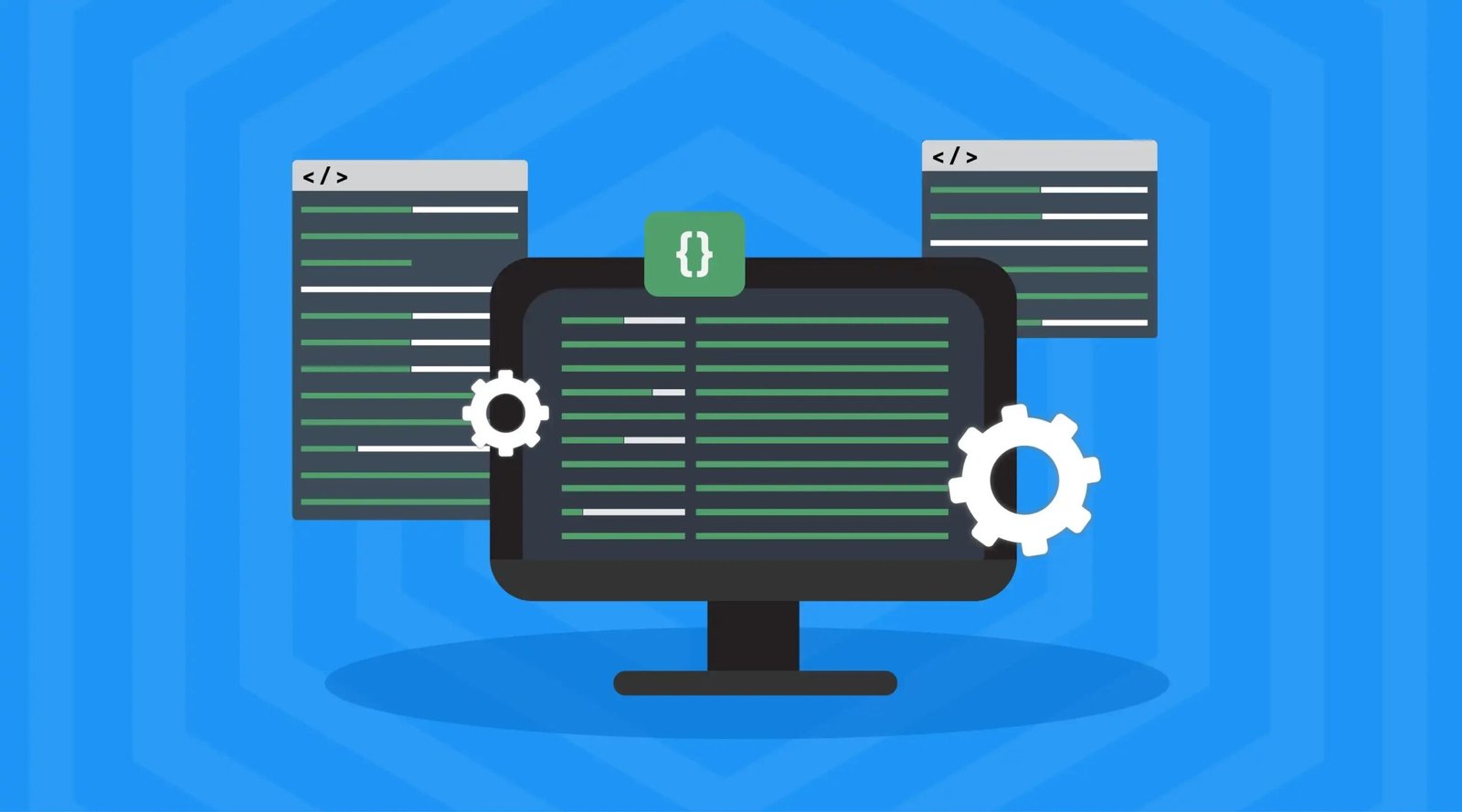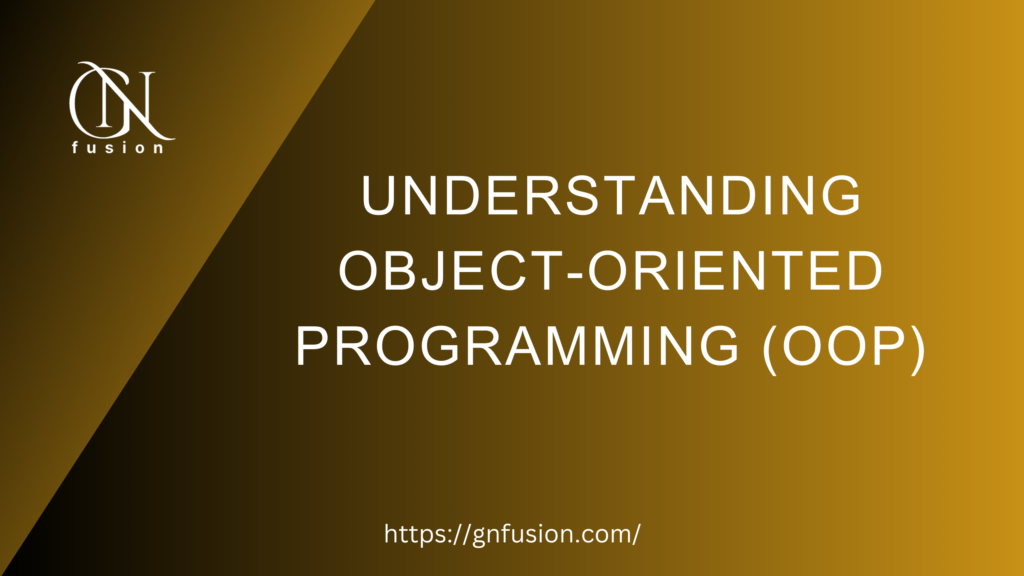Introduction to Object-Oriented Programming (OOP)
Object-Oriented Programming (OOP) is a programming paradigm based on the concept of “objects,” which are instances of classes. It is a method of structuring software in a way that models real-world entities and their interactions. The primary focus of OOP is on organizing code around data (objects) and the operations (methods) that can be performed on that data.
OOP helps make code more modular, reusable, and easier to maintain. By using concepts like encapsulation, inheritance, polymorphism, and abstraction, developers can create flexible and scalable applications.
Why is OOP Important in Programming?

- Modularity: OOP allows for breaking down complex problems into smaller, manageable parts. Each object handles a specific task, which makes the code more organized and easier to manage.
- Reusability: By defining classes and objects, you can reuse code across different programs. For example, you can define a class for a “Car” object and reuse it in multiple applications without rewriting the logic each time.
- Maintainability: OOP makes it easier to maintain and modify code. Changes made to a single object or class don’t affect other parts of the program, reducing the risk of bugs.
- Security: Through encapsulation, OOP restricts direct access to object data, allowing changes only via defined methods. This ensures data integrity and security.
- Scalability: OOP is inherently designed to scale. Adding new functionality or modifying existing features is easier, making it suitable for large applications.
Core Concepts of OOP
To fully understand OOP, we must grasp its four fundamental concepts:
- Classes and Objects:
- Class: A blueprint or template that defines the properties and behaviors of an object.
- Object: An instance of a class. It is a specific representation of a class in memory.
- Encapsulation:
Encapsulation is the concept of wrapping data (variables) and methods that operate on that data into a single unit called a class. It hides the internal workings of an object and only exposes necessary functionalities to the outside world. This ensures that the data is safe from unintended changes. - Inheritance:
Inheritance allows one class (child class) to inherit the properties and methods of another class (parent class). This promotes code reuse and creates a hierarchy between classes. - Polymorphism:
Polymorphism allows a single method or function to behave differently based on the object it is applied to. This means that the same method can have multiple implementations depending on the object calling it. - Abstraction:
Abstraction involves hiding the complex implementation details and showing only the essential features of an object. It simplifies interactions with objects and reduces complexity.
How to Write OOP Code: Step-by-Step

Step 1: Define the Class
Start by defining a class. A class serves as the template from which objects are created. Use the class keyword (in most languages) to define it. For example, let’s define a simple Car class.
class Car:
def __init__(self, make, model, year):
self.make = make
self.model = model
self.year = yeardef start_engine(self):
print(f”The {self.year} {self.make} {self.model}’s engine is now running.”)
In this example, the Car class has three attributes (make, model, year) and a method (start_engine) that performs an action.
Step 2: Create Objects (Instances of Classes)
Once the class is defined, you can create objects from it. Objects represent specific instances of a class.
my_car = Car(“Toyota”, “Camry”, 2020)
your_car = Car(“Honda”, “Civic”, 2018)
Here, my_car and your_car are objects of the Car class, each representing different cars.
Step 3: Use Methods and Access Properties
You can interact with objects by calling their methods and accessing their properties.
my_car.start_engine()
print(f”My car is a {my_car.year} {my_car.make} {my_car.model}.”)
In this code, we call the start_engine method and print the car’s details using its attributes.
Step 4: Implement Inheritance
Inheritance allows you to create a new class based on an existing class, inheriting its properties and methods.
class ElectricCar(Car):
def __init__(self, make, model, year, battery_size):
super().__init__(make, model, year)
self.battery_size = battery_sizedef charge(self):
print(f”Charging the {self.year} {self.make} {self.model}’s battery.”)
In this example, ElectricCar inherits from Car and adds an extra attribute, battery_size, and a new method, charge.
my_tesla = ElectricCar(“Tesla”, “Model S”, 2022, 100)
my_tesla.start_engine()
my_tesla.charge()
Step 5: Implement Polymorphism
Polymorphism allows you to override methods in a subclass to change or extend their behavior.
class SportsCar(Car):
def start_engine(self):
print(f”The {self.year} {self.make} {self.model} revs its powerful engine.”)
In this example, the SportsCar class overrides the start_engine method to provide a custom implementation.
my_sports_car = SportsCar(“Ferrari”, “488”, 2021)
my_sports_car.start_engine() # Custom implementation in SportsCar
Step 6: Implement Abstraction
Abstraction helps you create a clean interface for interacting with objects while hiding complex implementation details.
In many OOP languages, abstraction can be achieved using abstract classes or interfaces. However, this example illustrates abstraction by simplifying a class’s implementation.
from abc import ABC, abstractmethod
class Vehicle(ABC):
@abstractmethod
def start_engine(self):
passclass Motorcycle(Vehicle):
def start_engine(self):
print(“The motorcycle engine starts with a roar.”)
Here, Vehicle is an abstract class, and Motorcycle provides the concrete implementation of the start_engine method.
Advantages of Using OOP
- Improved Code Organization: OOP helps in structuring your code in a logical, easy-to-follow manner, making the development process smoother.
- Increased Productivity: With inheritance, polymorphism, and modularity, developers can reuse code and focus on other aspects of development, improving productivity.
- Faster Bug Fixing: Since OOP promotes encapsulation, bugs are easier to trace and fix in isolated parts of the code.
Common OOP Languages
- Python: Known for its simplicity and readability, Python supports OOP and is widely used for various types of software development.
- Java: A classic OOP language with strong typing and a large standard library, often used for building enterprise-level applications.
- C++: An OOP language that adds object-oriented features to C, used in performance-critical applications.
- C#: A modern OOP language built for the .NET framework, often used in desktop and web applications.
AI Chatbots and Visual Assistance for Enhanced Customer Experiences
Comment
Object-Oriented Programming is a powerful paradigm that brings structure, scalability, and reusability to software development. By understanding the core concepts like classes, objects, inheritance, polymorphism, encapsulation, and abstraction, you can write more efficient, modular, and maintainable code. OOP is not just a technique for solving programming problems; it’s a mindset for designing software that can grow and evolve over time.
By learning OOP principles and applying them in your projects, you can write more robust applications and take advantage of the numerous benefits this programming style offers.
If you enjoy this article or find it helpful. Please like, comment, and share this post.



